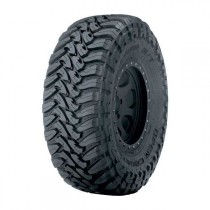The Role of Tires On Your Jeep
The tires on your Jeep are easy to overlook when there are so many interesting gadgets and upgrades out there for the rest of your vehicle. But, ignore your tires and you won’t be riding easy for long. In fact, your Jeep tires are one of the largest pieces of safety equipment that you own. Most don’t stop to consider that, but it will only take a tire failure to remind you. Like so many things in life, you get what you pay for, and failing to plan means you plan to fail. This has never been truer when it comes to Jeep tires. Knowing what type of tire to use, when to inflate, and when to air down are just some of the considerations when you own a Jeep and plan to do more than go from home to the office in it. Taking a bit of time to learn about your Jeep’s tires can save you time, trouble, money, and can keep it from literally blowing up in your face.
Aggressive Jeep Tires
Most Jeep owners change out the tires for something larger, but there are other considerations concerning the actual tire. Specific tires are made for specific uses, and if you choose the wrong set you will see the performance impacted. If you plan to use your Jeep as a hard-core modified beast, then you would buy different tires as opposed to someone that will use their Jeep as the occasional off-road toy. Honestly, most people use their Jeep for normal driving, with the occasional off-road jog. In this scenario, you would want a tire that offers great performance on paved roads at high speeds, but also has the tread necessary to handle moderate off-road terrain. AT tires work great for this, and will still offer a quiet ride. Keep in mind that if you are also considering increasing the height, that most tires that are 31” or bigger will require you to make additional adjustments to other components of your Jeep, most importantly your suspension.
OH, the Pressure
Keeping your tires inflated to the recommended PSI does more than keep the manufacturers happy. In fact, keeping them inflated properly allows them to wear evenly, and keep your fuel mileage on the happy side. Inflated correctly, your tires will handle better, offer dependable traction, offer more comfort, and will allow your Jeep to perform at its best. Overinflating the tires is dangerous. There are numerous videos out there of epic fails where this is concerned. Never hook up your tire to an automatic pump and walk away. Tires, like balloons, have a capacity rating and once that is breached, it’s “good-bye”. If you aren’t sure what the inflation rate should be for your Jeep, it should be listed on a sticker slapped onto the inside part of your driver’s side door frame. It’s also in the manual, and available in a million places online. There are a few exceptions to this rule, though.
Pumping up, Pumping Down
Never overinflate. However, you can, and should, underinflate when you are going off road. For one thing, it improves your traction going over dirt, sand, and loose rocks. The downside to that is that the load carrying capacity is lost to some extent. Lowering your tire pressure by even 20 psi can drop your load capacity by a few hundred pounds. Most off-roaders drop it by no more than that, and most opt for 10 psi. Letting air out of the tires makes your tire squatter, and gives it more footprint, but it will also expose more of the sides to sharp sticks and rocks. Once you go back to highway driving you MUST pump them back up as long-term underinflation can lead to massive damage.






